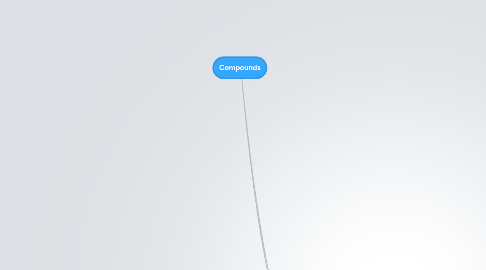
1. Metals
1.1. Properties
1.1.1. Good conductors of heat & electricity
1.1.2. Solid at room temp (except for one)
1.1.3. Reflect light (luster)
1.1.4. Ductile
1.1.5. Malleable
1.1.6. Ionic Bonding
1.1.6.1. 1-3 electrons in their outer shell
1.1.6.2. Usually give up electrons easily
1.1.6.3. Metals lose electrons and form ionic bonds with nonmetals
1.1.6.4. More chemically stable when ionic bonds are formed
1.1.7. Metallic Bonding
1.1.7.1. When positively charged metallic ions are surrounded by a cloud of electrons
1.1.7.2. Electrons move freely in a cloud because they are not held tightly to the nucleus
1.2. Types of Metals
1.2.1. Alkali Metals
1.2.1.1. Group 1
1.2.1.1.1. 1 electron in outer shell
1.2.1.1.2. Becomes positively charged ion
1.2.1.2. Softer than most metals
1.2.1.3. Most reactive metal
1.2.1.3.1. Reacts violently with oxygen and water
1.2.1.4. Do not occur freely in nature
1.2.1.5. Practical use
1.2.1.5.1. Lithium compounds for bipolar depression
1.2.1.6. Francium is very rare and radioactive
1.2.2. Alkaline Earth Metals
1.2.2.1. Group 2
1.2.2.1.1. 2 electrons in outer shell
1.2.2.1.2. Becomes positively charged ion
1.2.2.2. Practical use
1.2.2.2.1. Magnesium creates the white light in fireworks
1.2.2.2.2. Calcium phosphate makes bones strong
1.2.2.2.3. Barium Sulfate used as contrast for radiation
1.2.2.3. Radium is radioactive
1.3. Transition Elements
1.3.1. Groups 3-12 on the periodic table
1.3.2. Properties
1.3.2.1. Occur in nature as uncombined elements
1.3.3. The Iron Triad
1.3.3.1. Iron, cobalt, and nickle
1.3.3.1.1. Iron is the most widely used
1.3.3.1.2. Nickle is used to strengthen
1.3.3.2. Used to create steel and other metal mixtures
1.3.4. Coinage Metals
1.3.4.1. Copper, silver, and gold
1.3.4.1.1. Copper- electrical wiring
1.3.4.1.2. Silver iodide and silver bromide break down in light and produce images on paper
1.3.4.2. Used to make coins
1.3.5. Group 12 elements
1.3.5.1. Zinc, cadmium, and mercury
1.3.5.1.1. Zinc and cadmium are used to coat other metals such as iron
1.3.5.1.2. Mercury is poisonous and the only metal that is liquid at room temperature
1.3.6. Inner Transition Metals
1.3.6.1. First row
1.3.6.1.1. Lanthanide series (follows lanthanum)
1.3.6.2. Second row
1.3.6.2.1. Actinide series (follows actinium)
1.3.6.2.2. Radioactive and unstable
1.3.6.2.3. Thorium and uranium are in the Earth's crust
1.4. Ores
1.4.1. Metals combined with other elements in the Earth's crust
1.4.2. Once mined, the ore is separated from the rock
2. Nonmetals
2.1. Properties
2.1.1. Gases or brittle solids at room temperature
2.1.2. Do not conduct heat or electricity well
2.1.3. No metallic luster
2.1.4. Bonding
2.1.4.1. Electrons are held tightly to the nucleus
2.1.4.2. Ionic and covalent bonds can be made
2.1.4.2.1. Ionic bonds: nonmetal becomes more negative when it gains electrons from metals
2.1.4.2.2. Covalent bonds: electrons are shared between NONMETALS
2.2. Hydrogen
2.2.1. 90% of nonmetals in the universe
2.2.2. Diatomic molecule: two atoms of the same element covalently bonded
2.2.3. Properties
2.2.3.1. Highly reactive
2.2.3.2. Has one electron
2.2.3.3. Can gain electron when bonded with alkali metals and alkaline earth metals
2.2.3.3.1. Form "hydrides"
2.3. Halogens
2.3.1. Halogen lights contain bromine or iodine
2.3.2. Group 17
2.3.3. Properties
2.3.3.1. Very reactive
2.3.3.2. 7 electrons in their outer shell
2.3.3.3. Salt is formed when electron is gained
2.3.3.4. Reactive diatomic covalent molecules when in gaseous state
2.3.4. Flourine is most reactive
2.3.5. Practical use
2.3.5.1. Chlorine compounds are used for cleaning
2.3.5.2. Bromines are used as dyes
2.4. Noble Gases
2.4.1. Exist as isolated atoms
2.4.2. No naturally occurring gases are known
2.4.3. Outer shell of electrons is full
2.4.4. Very stable, which makes them useful
2.4.5. Practical use
2.4.5.1. Neon and argon are used in neon lights
2.4.5.2. Helium is useful in balloons
3. Mixed
3.1. Metalloids
3.1.1. Properties
3.1.1.1. Can form ionic and covalent bonds
3.1.1.2. Metallic and nonmetallic properties
3.2. Transuranium
3.2.1. More than 92 protons
3.2.2. Unstable, disintegrate quickly
